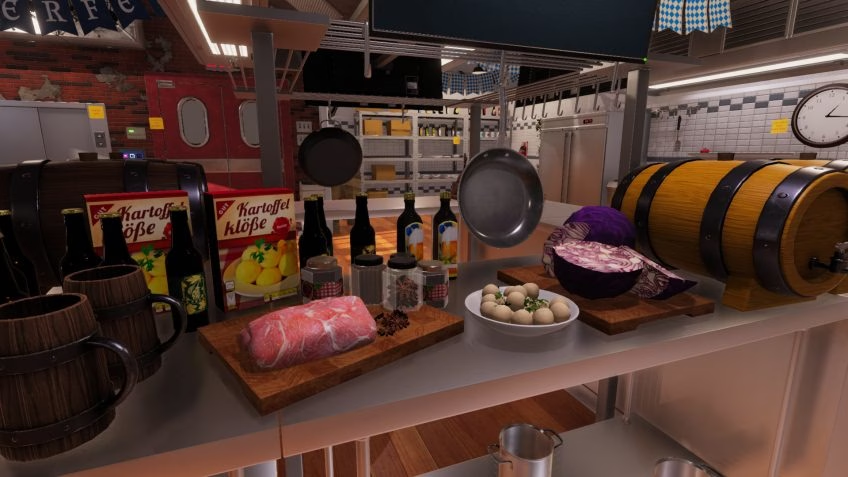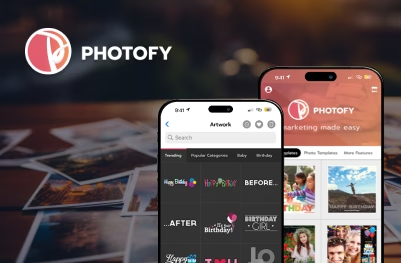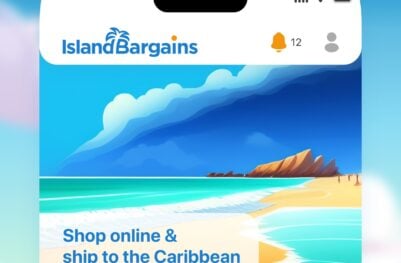- Developers
- Developer Blog
- Software Development
- How to Develop a VR Cooking Simulator?

profile

By Aran Davies
Verified Expert
9 years of experience
Aran Davies is a full-stack software development engineer and tech writer with experience in Web and Mobile technologies. He is a tech nomad and has seen it all.
Are you planning to make a mark in the VR simulator space by creating a VR cooking simulator game? If you are then you need to know how to develop such a game. Read on as this guide will help.
Read on, as we explain how to develop a VR cooking simulator game.
A quick recap of VR and its use in simulators, gameplay, etc.
The term “Virtual Reality” (VR) refers to a “computer-generated simulation in which a person can interact within an artificial three-dimensional environment using electronic devices.”
VR uses a combination of computer hardware and software to provide an immersive experience to users. When users put on a VR headset, they are transported into a 3D-simulated world.
As we explained earlier, a VR environment allows users to interact, i.e move around, handle tools and objects, etc.
VR has many important use cases, e.g.:
- Gaming companies already create VR games. These can be single-player or multiplayer games. Rapid innovations in this space make these games interesting. E.g., using realistic physics-driven interaction systems as the core gameplay mechanics makes VR games more engaging.
- Media and entertainment companies can create engaging content.
- Marketers can make ads more engaging. They can offer you personalized content and ads and use cookies and data for this purpose depending on your settings.
- Potential customers can virtually try a product created by a company.
- VR-based simulation can help to train professionals in complex jobs. Examples are VR simulators to train doctors and fire extinguishers.
- VR-based learning programs can help students. E.g., researchers at the Vienna University of Technology recommend using VR for physics education. A dash of real-life physics offered by VR can help students.
- Businesses can make the prototyping of complex products easier with VR.
- Organizations can use VR to manage meetings better.
The market for VR is growing. A GlobeNewsWire report estimates this market to grow from $3.10 billion in 2019 to $57.55 billion in 2027. That’s an impressive CAGR of 44.3% during the 2020-2027 period.
An overview of the VR ecosystem including popular VR headsets
Several popular VR headsets exist. A few of them are as follows:
- Oculus Quest: It’s a popular all-in-one VR headset from Oculus. Users don’t need PCs or wires to use it.
- Oculus Quest 2: This standalone VR headset from Oculus offers powerful VR experiences. You can connect it to your PC too.
- Sony PlayStation VR: It’s from Sony, and it’s compatible with PS4.
- Oculus Rift S: This was a big name in the VR world. It offered much to consumers, e.g., you could play Xbox One games directly on Oculus Rift.
- HTC Vive Cosmos: This is from HTC. HTC Vive Cosmos is the upgraded version of HTC Vive.
- Valve Index: This headset is from Valve Corporation. It’s a PC-tethered VR headset offering high performance and user experience.
Not just headsets but a vibrant and growing VR ecosystem exists. Check out the following examples:

Get a complimentary discovery call and a free ballpark estimate for your project
Trusted by 100x of startups and companies like
- Technology giants like Microsoft have created solutions like HoloLens.
- Intel, another technology giant has created True VR, an end-to-end VR solution.
- Well-known technology companies like NVIDIA offer GPUs (Graphics Processing Units) for VR.
- Reputed companies like Asus offer GTX graphics cards for VR.
- Valve offers SteamVR, which allows you to play VR games using different headsets like HTC Vive, Oculus Rift, etc.
Examples of VR cooking simulator games
Looking for ideas to develop cooking simulator VR games? Review the following examples:
1. A VR cooking game from GameBoom VR
GameBoom VR has developed an interesting VR cooking game. Big Cheese Studio and PayWay are the publishers of this game.
The game includes a realistic kitchen with the most common utensils. The game includes interesting recipes, furthermore, you can see lifelike ingredients.
This game is a good way to understand the mechanics of cooking and learn how to improve your cooking without making a mess!
2. A VR cooking simulator game from Play Spirit
Play Spirit, a game development and publishing company offers a cooking game VR on Oculus Rift. The game supports single-user and multiplayer game modes.
Players can get a virtual cooking experience that’s highly realistic.
Popular Oculus platforms like Rift and Rift S provide VR support for this game. Oculus Touch supports this too.
Oculus displays the recommended processors, GTX cards, memory, the requirement for available space, etc., on its webpage for this game.
Another popular game is cooking sim VR. Read more details on it here.
How to build a VR cooking simulator game?
Take the following steps to develop a VR cooking simulator game:
1. Onboard a team for project planning
Onboard a small team with a project manager (PM), software architect, and a few business analysts (BAs). This team will define the project scope.
It will collect business requirements, and furthermore, it will document them. This small team decides on the development approach and will choose the right technology stack, etc.
This team will plan the project and its requirements, including the developers that you will need to onboard at a later date.
2. Collect and document the project requirements
Your business analysts (BA) need to play a key part here. They need to gather the necessary market insights. BAs might need to interview the business stakeholders to collect functional requirements.
They might need to debate and agree on the following:
Hire expert developers for your next project
1,200 top developers
us since 2016
- The content, e.g., players, kitchen, lifelike ingredients, etc.;
- Which VR headsets to target, e.g., Oculus Quest, Oculus Quest 2, Oculus Rift, HTC Vive, etc.;
- Supported modes, e.g., single-player or multiplayer;
- Relevant features like career mode, DLC (Downloadable Content), sandbox mode, add-to-wishlist, etc.
You need to decide on the non-functional requirements (NFRs) like performance, usability, etc. Your architect needs to play a key part here. Document the requirements effectively and manage them.
Note: You will likely prioritize developing a VR game for popular VR headsets. Additionally, you might want to offer the game on the web and mobile too.
Think through this carefully. You need to contend with factors like latency, and the low processing power of mobile devices.
3. Prioritize the features for your MVP (Minimum Viable Product)
We recommend you use the Agile methodology to execute this project. You might need to launch several versions of the planned VR cooking game. The Agile methodology supports this kind of iterative development.
We recommend you launch an MVP (Minimum Viable Product). An MVP has fewer features than a complete product, however, it’s a functional product.
You can get market feedback by launching an MVP. You can undertake course correction of product enhancement activities depending on the feedback.
Prioritize the features for your MVP. As we talked about in our MVP guide, you can use the following tools for this:
- “Pain and gain map”;
- Prioritization matrix.
4. Choosing a VR development tool
We recommend you use a reputed VR development tool. This expedites your project significantly, and you can get market feedback quicker.
Consider using Amazon Sumerian. This development tool from AWS helps you to create 3D immersive experiences, AR, and VR. You can use its extensive document and get started quickly.
Amazon Sumerian makes it easy to create VR content. You can also integrate easily with other AWS services.
Amazon Sumerian supports all key VR platforms. You can create your VR content once, and Amazon Sumerian enables you to deploy it elsewhere.
Amazon Sumerian supports popular VR use cases like training simulation, advertising travel destinations, etc. Amazon Sumerian has many ready-to-use templates and assets.
You can easily deploy your cooking simulator VR game on popular VR hardware platforms like Oculus Go, Oculus Rift, HTC Vive, etc.
AWS provides comprehensive tutorials and documents for Amazon Sumerian. Check out the Amazon Sumerian pricing page.
Hire expert developers for your next project
Note: You can evaluate other VR development tools too. The following are a few examples:
- Unity;
- Unreal Engine 4 (UE4);
- CRYENGINE;
- Blender;
- 3ds Max;
- Maya;
- Oculus Medium.
5. Choosing the right technology stack for web and mobile development if you opted for them
Assuming you chose to develop web and mobile apps, you need to choose the right technology stack. We recommend you use the following:
- AWS: Developing web and mobile apps will be easier if you use a cloud computing platform. We recommend you use AWS, which is a leader in the cloud infrastructure and platform space.
- Angular or React for front-end web development: Both of these open-source JavaScript-based web development frameworks are popular. They are easy to use.
- Node.js for back-end web development: Node.js is a popular open-source runtime environment for JavaScript. You can develop performant and scalable web apps using it.
- Java or Kotlin for native Android development: You can use either Java or Kotlin for native Android mobile app development.
- Swift for native iOS development: We recommend you use Swift for native iOS mobile app development. This modern language has powerful features.
- MySQL or PostgreSQL if you need an RDBMS (Relational Database Management System): Both of these open-source SQL databases offer powerful features. Many developers know them.
- MongoDB or Apache Cassandra if you need a NoSQL database: MongoDB and Apache Cassandra are two of the most popular open-source NoSQL databases.
6. Hiring your development team
Now that you have defined and planned the project, you should hire your development team. Hire competent people for the following roles:
- VR developers:
- UI designers;
- Web developers;
- Mobile developers;
- Testers;
- DevOps engineers.
You might think that hiring a freelancer will help. Several freelance platforms help you to hire freelance developers at a low hourly rate.
However, you need to contend with several risks when working with freelancers. These are as follows:
- Part-time freelancers might not allocate sufficient time to your project.
- You might find it hard to manage the work of freelancers remotely.
- Freelance platforms don’t offer any management support.
- Freelancers might leave your project mid-way, and you will need to find replacement developers.
We recommend you hire developers from reputed and trusted software development companies. Such companies encourage their programmers to regularly upgrade their skills.
Software development companies provide management support. They provide replacement developers if the original developers leave the project mid-way.
7. Managing the project effectively
We recommend you use the Scrum method to manage this project. This method suits Agile projects very well. Form a Scrum development team. Such teams work as follows:
- A Scrum Master leads a Scrum team. Scrum teams are cross-functional teams where developers and testers work together.
- A Product Owner provides the business requirements.
- Scrum teams plan Sprints, i.e., iterations in Sprint Planning Meetings.
- These teams conduct Daily Stand-up Meetings to discuss project status and resolve issues.
- Scrum teams demonstrate the product to business stakeholders in a meeting named the Sprint Review Meeting.
- After a Sprint ends, Scrum teams conduct a lessons-learned exercise. It’s called the Sprint Retrospective Meeting.
Scrum teams focus on delivering sustained value to clients. They foster an environment of teamwork.
Final thoughts
We have outlined the general steps on how to develop a VR cooking simulator app. Such projects tend to be complex. If you don’t have all the experience and skillsets that you need then reach out to us at DevTeam.Space.
FAQs on VR Cooking Simulator
Popular VR development tools like Unity, Amazon Sumerian, Unreal Engine 4, CRYENGINE, and 3ds Max provide plenty of developer-friendly features. You can certainly expedite your project by using well-known VR development tools.
DevTeam.Space has experienced VR developers. We regularly encourage our developers to upgrade their skills and competencies. As a result, you will find our developers highly motivated. DevTeam.Space can support your VR development project requirements.
DevTeam.Space provides project management support in addition to developers. A dedicated account manager from DevTeam.Space will work with you. The DevTeam.Space account managers provide management oversight to ensure that our developers work effectively.

Alexey Semeney
Founder of DevTeam.Space
Hire Alexey and His Team To Build a Great Product
Alexey is the founder of DevTeam.Space. He is award nominee among TOP 26 mentors of FI's 'Global Startup Mentor Awards'.
Alexey is Expert Startup Review Panel member and advices the oldest angel investment group in Silicon Valley on products investment deals.


